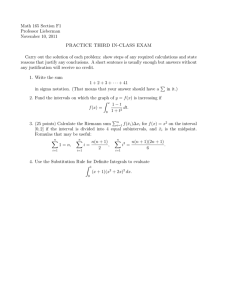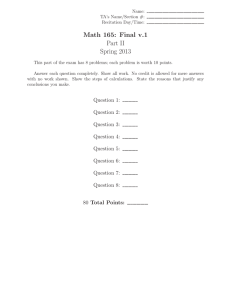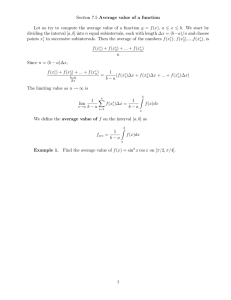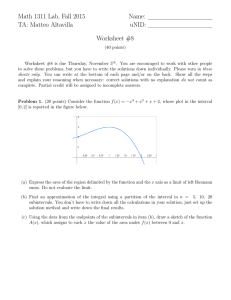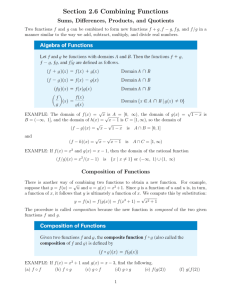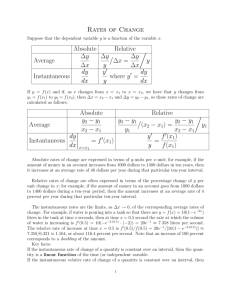33 The Average Value - Arkansas Tech University
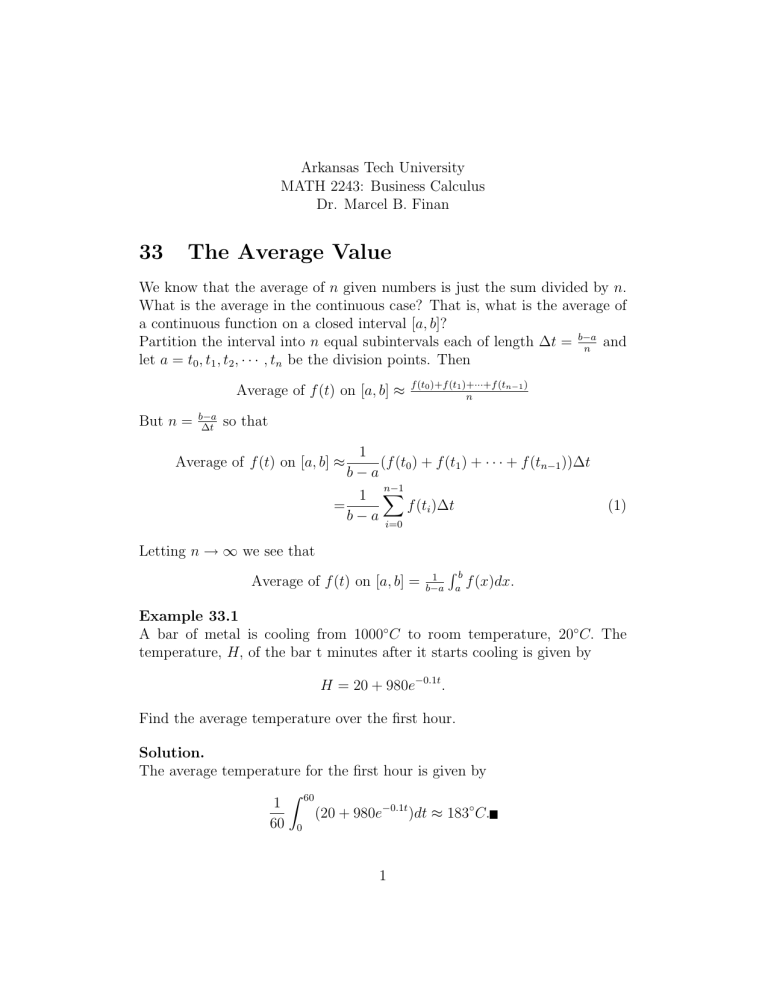
Arkansas Tech University
MATH 2243: Business Calculus
Dr. Marcel B. Finan
33 The Average Value
We know that the average of n given numbers is just the sum divided by n.
What is the average in the continuous case? That is, what is the average of a continuous function on a closed interval [ a, b ]?
Partition the interval into n equal subintervals each of length ∆ t = b − a n and let a = t
0
, t
1
, t
2
, · · · , t n be the division points. Then
Average of f ( t ) on [ a, b ] ≈ f ( t
0
)+ f ( t
1
)+ ··· + f ( t n − 1
) n
But n = b − a
∆ t so that
1
Average of f ( t ) on [ a, b ] ≈ b − a
( f ( t
0
) + f ( t
1
) + · · · + f ( t n − 1
))∆ t
1
= b − a n − 1
X f ( t i
)∆ t i =0
(1)
Letting n → ∞ we see that
Average of f ( t ) on [ a, b ] =
1 b − a
R b f ( x ) dx.
a
Example 33.1
A bar of metal is cooling from 1000
◦
C to room temperature, 20
◦
C.
The temperature, H, of the bar t minutes after it starts cooling is given by
H = 20 + 980 e
− 0 .
1 t
.
Find the average temperature over the first hour.
Solution.
The average temperature for the first hour is given by
1
60
Z
60
(20 + 980 e
− 0 .
1 t
) dt ≈ 183
◦
C.
0
1
Example 33.2
Suppose that C ( t ) represent the daily cost of heating your house, in dollars per day, where t is time in days and t = 0 corresponds to January 1, 2002.
R
90
Interpret the quantities C ( t ) dt and
1 R
90
C ( t ) dt.
0 90 − 0 0
Solution.
R
90
The integral C ( t ) dt represents the total cost in dollars to heat your house
0 for the first 90 days of 2002. The second expression represents the average cost per day to heat your house during the first 90 days of 2002.
Remark 33.1
From the definition of the average value we can write
(average value of f ) × ( b − a ) =
R b f ( x ) dx a
Geometrically, this says that the area of the rectangle of dimensions (average value of f ) × ( b − a ) is equal to the area under the graph of f ( x ) from x = a to x = b.
See Figure 60.
Figure 60
2
